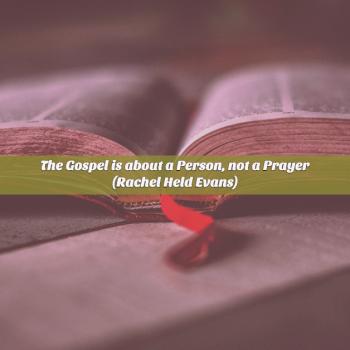 Today, I am honored to have a bit of a ‘hero’ on the blog. Dr. Ron Martoia has made a lasting impact on my spiritual journey. The same comment has been said by pastors throughout the world who appreciate his work in calling the church to her mission (ultimately, God’s mission) in the 21st century. He started asking questions about reshaping our understanding of the Bible as narrative, before it was en vogue, as he invited pastors and leaders to begin challenging our paradigms and assumptions; even introducing us to prolific thinkers like N.T. Wright! Read his article, join his “tribe,” and read his books! You are bound to be challenged and grow if you do so!
Today, I am honored to have a bit of a ‘hero’ on the blog. Dr. Ron Martoia has made a lasting impact on my spiritual journey. The same comment has been said by pastors throughout the world who appreciate his work in calling the church to her mission (ultimately, God’s mission) in the 21st century. He started asking questions about reshaping our understanding of the Bible as narrative, before it was en vogue, as he invited pastors and leaders to begin challenging our paradigms and assumptions; even introducing us to prolific thinkers like N.T. Wright! Read his article, join his “tribe,” and read his books! You are bound to be challenged and grow if you do so!
________________________________________________
Deciding what to apply and what to discard might be the fundamental question when reading the biblical text. I think it is fair to say that whatever system, church, denomination, or exposure you have had to biblical material the guiding question always has been, “which things in this passage apply and what things don’t.”
To phrase it with a bit more sophistication; what truths in the scripture are eternal and therefore relevant and what in the text is cultural and therefore no longer applicable? This is the two bucket theory: there is an eternal and ever relevant bucket and a cultural and irrelevant-to-my-life bucket. If I am correct this is and has been the guiding question in college and seminary hermeneutics classes for a long long time, probably the last couple centuries. So the academy continues to come up with theories about how to more carefully discern what stuff goes in which bucket.
Sound academic? Well on that technical level it might be but it is profoundly practical and affects every single bible reader today. Should women be forbidden to wear gold, pearls and braid their hair, because that is what I Timothy 2 literally says. Or pray only when their head is covered because that is what I Corinthians 11 says? It’s easy to say those are in the cultural bucket and therefore irrelevant. But when did they get put in that bucket? Who decided? When did they stop being eternal, applicable and inspired truth?
What about genocide in Numbers 31, which bucket?
What about selling all we have and holding it in common Acts 2.42-47? Which bucket?
The two bucket theory is built on a far too modern metaphor for this new world in which we live. My guess is most of us have not only heard this metaphor or something like it, but actually have it as the operating set of lenses with which we view our bible reading. Metaphors are images we use to give us insight. But we have to remember the limits of metaphors. They are merely illustrative. Metaphors work because there is a an element of truth that connects and clarifies. But metaphors breakdown and are culture specific. Metaphors that work today may not work tomorrow. We have been referring to the Bible as an “Owners Manual for Life,” and that is a metaphor has outlasted it’s welcome. Life simply can’t be negotiated with an owners manual. Life is too dynamic and too situational to yield to simple looked up entries in an index that refers us to a page for “the answer.”
And when I say “we” have been using the bible this way, I mean me and a host of other pastoral and professorial friends and colleagues. Guilty as charged we have propagated this messy myth. First let’s just admit that the idea of an owners manual implies a widget or gadget that needs a manual. That is distinctly modern. I just don’t see Justin Martyr or Origen, Thomas Aquinas of Martin Luther using this metaphor. I am not thinking they would have known what an owner’s manual was. Second, let’s admit that the metaphor implies a comprehensiveness in the manual that it simply can’t support. What do I mean?
When we make ridiculous and outlandish claims that if you have questions, the Bible has answers, that if you have issues the Bible has a way through it; we are placing on the good book a burden it can’t begin to carry nor was it written to do so. There are numerous things the bible doesn’t address and because of it’s historical location couldn’t begin to address. Third, let’s admit part of our love of using the metaphor of the owner’s manual is because it reduces the wild, inconsistent text (yes it is inconsistent – more on that later) and a difficult and hard to understand text into something that is as easy to use as the little manual I got with my toaster oven.
Let’s lay aside the old question that leads us to the two bucket approach. And instead of asking what is cultural and irrelevant and what is eternal and applicable how about if we acknowledge the entire text is cultural and that none of it is written to an audience in 2010 and in spite of what we are often told, inspiration does not make it universally applicable. So what about this as a new possibility?…
How does an inspired text exert or exercise a shaping influence on the life of the reader(s)? The key word is “how?” In the past it was through extracting what we thought were timeless truths from a time bound text, sort of trying to figure out the eternal kernel in the culture bound husk. But what if we admit the obvious, it is all cultural and it can’t be otherwise.
When we acknowledge it is all cultural that is not he same thing as saying it is all irrelevant. That would be to attach this new question to the previous two bucket question where what is cultural is considered irrelevant. What we are doing here is saying the two bucket question was a manufactured polarity or duality. The whole biblical text was written by people in very particular cultures, to people within very particular cultures making EVERTHING that was said very particular. So how does a text with cultural particularity or specificity exercise influence and shaping authority…a generation later, a culture away, a millennium or two later?
Now there might be other questions that could be asked and I am all ears to hear some of the ideas out there. So please fire away. But let’s at least start with this new question.
This new question opens us up to some challenging but very fruitful possibilities. Here is how. The old two bucket question broke down because we realized as cultures evolve values change. Now I know to a Christian that sounds like heresy…but that is simply our poor training we have unreflectively engaged. We all would agree the cultural value placed on the institution of slavery has changed or the value place on woman being silent or the institution of child sacrifice (God literally asking Abraham to kill his first born son in the inspired text). These have all changed through time. That observation, and the reason the bucket theory breaks down, is part of our way forward…I think.
What happens when we start to call out that each culture being written to and each author writing is at a particular stage of development or stage of cultural progress and we HAVE to take THAT into consideration as we think about the bible?
If we ponder this new question what other possible metaphors emerge that we might consider successors to the “owner’s manual?” How about a jazz score? A drama script? A classic?
This is the question and the potential metaphors I explore in the my Zondervan published “The Bible As Improv: Seeing and Living the Script in New Ways.”
— My biggest interest currently is in the edge of awareness based formation. My next book in process is based upon this manifesto you can download here. If you would like to learn about how a growing group of international revolutionaries from 6 countries are meeting in an online learning community doing transformation and spirituality in ways sensible to the postmodern world in which we live think about joining the Transformational Trek Tribe, you can get more information here.
You can find me at www.velocityculture.com and on twitter at rsmartoia
————————————————-
BIO: Dr. Ron Martoia is a transformational architect…What in the world is that you ask? Ron helps people and the organisms they serve, design and then journey through the experience of deep change. He consults with executive teams in corporate settings, but specializes in churches. Ron currently serves as a distance staff member for a number of churches in the United States, South Africa, and the Bahamas.
The landscape of ministry is undergoing quantum changes. Many of these changes are theological and cultural shifts that in turn change the way churches see and then intersect their communities. Author of numerous periodical articles, his first book project was entitled Morph!, a volume helping leaders do good self leadership as they foster creative and compelling environments. Ron’s second book came out in May of 2007. Static: Tuning out the “Christian Noise” to Experience the Real Message of Jesus, addresses how the words we use are containers, which engender or endanger genuine dialogue. The sequel to Static, Transformational Architecture: Reshaping Our Lives as Narrative released in November 2008 and probes the core yearnings within the heart of every human being and how those longings open the way for spiritual conversation. His fourth book, The Bible as Improv: Seeing and Living the Script in New Ways, was released in March of 2010 by Zondervan.
In addition to his consulting and writing, he has created a global spiritual formation container the Transformational Trek Tribe. The tribe meets online daily where videos, monthly book reads, forum discussions, and most of all formative practices are engaged. More information can be found on his website http://www.velocityculture.com
Ron’s doctorate is in the area of leadership and culture. In addition to having served on adjunct faculty at several Universities, Ron has provided leadership training and organizational development in 15 countries of the world.
Free Download! ttTribe-Manifesto











